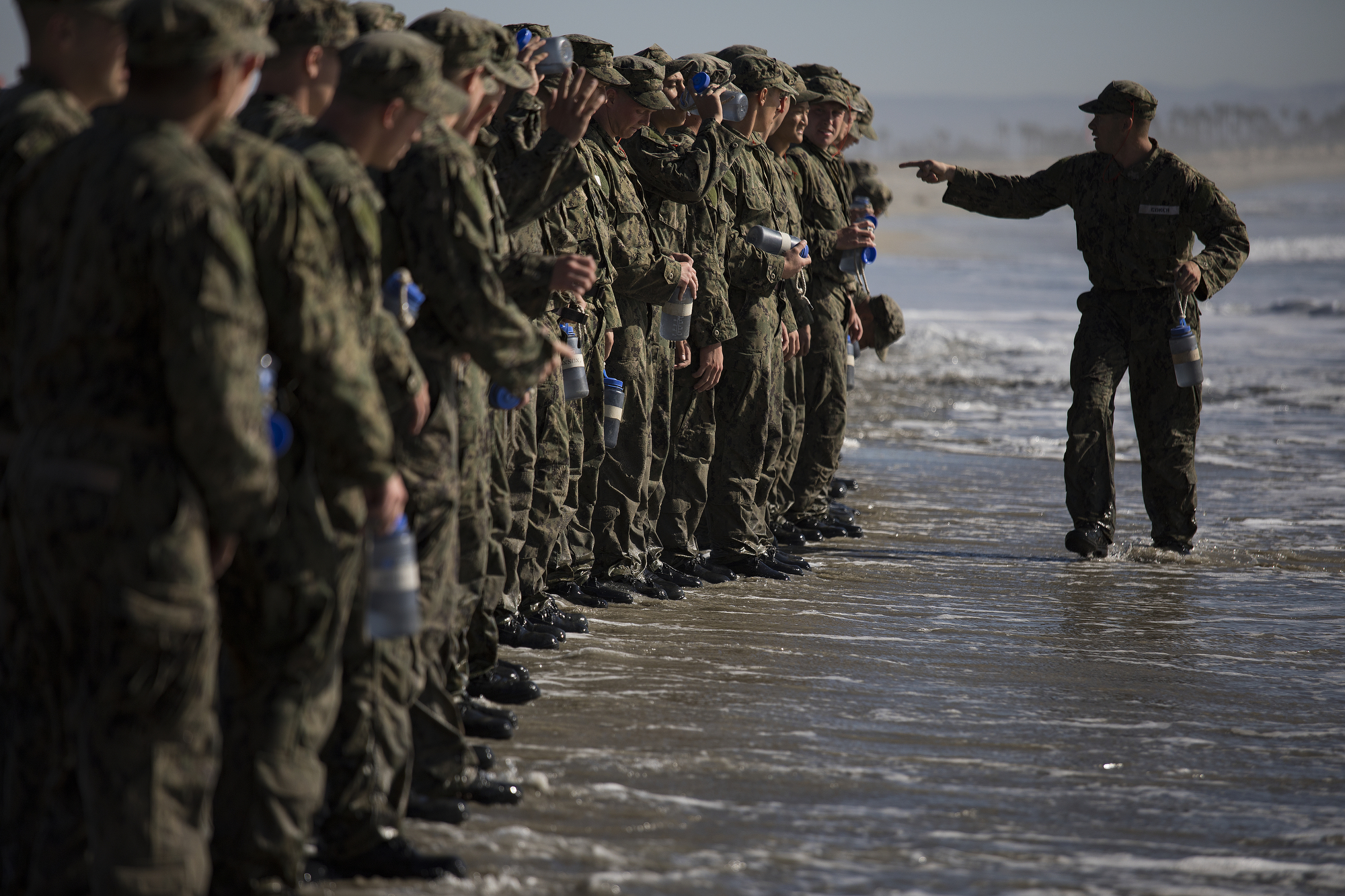
Navy lawyers are reviewing an investigation to determine potential punishments for sailors who may bear responsibility for the death of a SEAL candidate in 2022, USNI News has learned.
In his endorsement of the command investigation into the death of 24-year-old Seaman Kyle Mullen, Naval Education Command commander Rear Adm. Peter Garvin recommended that sailors spread around 10 different functions involved in the training and treatment of Basic Underwater Demolition/SEAL training candidates could face accountability actions. A Navy spokesperson would not give specific numbers of sailors that are at risk for punishment. The decision would be left up to commanders based on recommendations from Navy lawyers, USNI News understands.
The March 24 endorsement tops a November investigation into the circumstances surrounding Mullen’s Feb. 4, 2022 death that identified several gaps within the medical oversight of SEAL training, especially around the “Hell Week” graduation exercise. A lack of written policy and guidance, including on medical issues associated with Hell Week and training, as well as insufficient communication led medical providers to miss the deteriorating conditions of Mullen and other unnamed SEAL candidates.
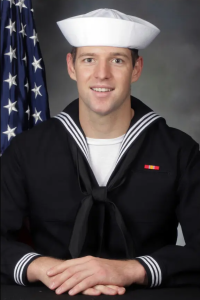
“This investigation identifies risks that aggregated as the result of inadequate oversight, insufficient risk assessment, poor medical command and control, and undetected performance-enhancing drug use; and also offers actionable solutions to mitigate those risks going forward,” Garvin wrote in his endorsement of the investigation performed by Rear Adm. Benjamin Reynolds, the director of operations and plans (N3) for the Office of the Chief of Naval Operations.
An October investigation into Mullen’s line of duty death found the sailor died of bacterial pneumonia with a contributing factor to be cardiomegaly – an enlarged heart. The timeline surrounding Mullen’s death, included in the May 25 investigation as well as the October investigation, found that Mullen struggled with respiratory issues throughout Hell Week before ultimately succumbing to pneumonia after he completed the phase.
A lack of communication between medical providers resulted in Mullen’s deteriorating condition going unmonitored. Another SEAL candidate also struggled with respiratory challenges and was taken to the hospital with Mullen. The unnamed candidate was ultimately intubated and also diagnosed with pneumonia.
Mullen sought medical assistance at the urging of his classmates on Feb. 3, 2022, after his worsening condition, including a hacking cough and a dark-colored fluid pouring out his nose and mouth when he sat up, worried them.
While on the way to medical, the candidates were stopped by an unnamed person who told them it was not time to go to medical as the candidates were going to be woken up and there would be a sick call.
The investigation does not say what happened during the sick call that morning.
Download the document here.
Mullen was treated on Friday, Feb. 4, 2022 with high-flow oxygen due to a low oxygen saturation level. His vital statistics returned to normal after being treated with oxygen and he appeared normal, talking about playing football at Yale and singer Taylor Swift.
He then returned to training before needing to go back to the ambulance for a second time due to respiratory distress.
The medical providers in the ambulance treated Mullen as if he were suffering from Swimming Induced Pulmonary Edema, a medical condition that can be associated with cold water exposure and causes people to have breathing difficulties and spew frothy, pink sputum. SIPE is a common occurrence among SEAL candidates and Reynolds’ investigation found that medical providers may have normalized it, preventing them from seeing signs and symptoms of other conditions like pneumonia.
The medical provider who treated Mullen with oxygen in the ambulance did not alert other medical professionals about the course of treatment. Mullen’s treatment in the field was not noted in the BTC medical log. The next time a medical provider checked Mullen, they noted hearing diffused crackles in his lungs.
Without knowing Mullen had needed oxygen, the medical professional did not recognize that there might have been a more serious concern and did not order additional diagnostic testing.
“In the absence of reported symptoms, a field report of respiratory issues, or abnormal vital signs, the diffuse crackles in the lungs were not enough by themselves for [redacted] to trigger SIPE protocol or pursue any further diagnostic workup,” according to the May investigation.
Mullen repeatedly declined to go to the hospital or seek medical care despite his worsening condition, out of fear that he would get dropped from SEAL training.
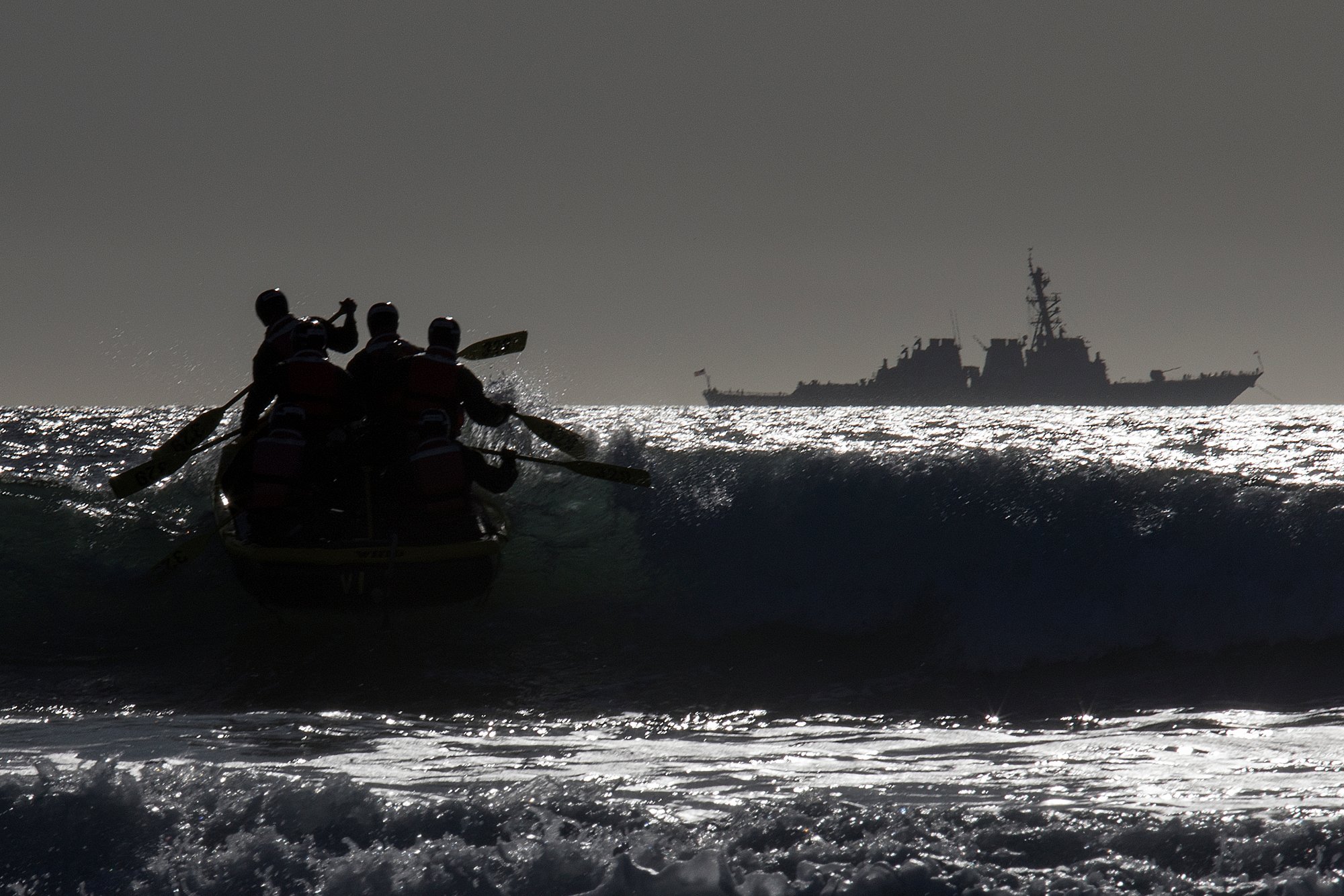
“He had told friends and family that would ‘not ring the bell no matter what,’ and would die before he quit,” according to the May investigation.
The May investigation noted that candidates shared concerns about seeming weak or dropping from the training, which led to a reluctance to seek medical treatment. In some cases, this led Navy providers to recommend against going to the hospital for treatment, as the medical professionals would not understand the conditions the candidates experienced as part of BUD/S. Each candidate received a hard copy of a medical brief urging them to go to the Navy Special Warfare Center duty medical officer over civilian medical personnel.
“The hard copy of the NSWCEN medical debrief provides the phone number for the Duty Medical Officer and stated: ‘Do Not go and see other medical providers. We will see you at any time (If it is a true emergency call 911). … IF YOU GO AND SEE OTHER MEDICAL PERSONNEL WHO DO NOT UNDERSTAND HELL WEEK, THEY MAY ADMIT YOU TO THE HOSPITAL OR GIVE YOU MEDICINES THAT ARE NOT COMPATIBLE WITH TRAINING,’” according to the investigation.
At Basic Underwater Demolition/SEAL at the time of Mullen’s death, both Navy Special Warfare Command and Navy Special Warfare Command Basic Training Command had medical units overseeing sailors undergoing SEAL training that operated independently of each other but adjacently, which led to disjointed continuity of care and policies not being followed.
During Mullen’s class, the BTC Medical and the Navy Special Warfare Center Medical were not meeting or doing cross-training.
“At a minimum, the [Navy policy] requires that when a patient is handed over for subsequent care or treatment, the care providers must be coordinated to ensure optimal continuity of care, including a process to receive or share relevant patient information related to the reason for referral, the patient;’s physical and psychosocial status, a summary of care, treatment, and services provided and progress toward goals, and a list of current medication,” according to the May inspection.
The Navy Special Warfare Center did not have a signed directive to govern its medical center or the BTC medical center. It instead operated using an unsigned standard operating procedure, which did not address medical practice or protocols for caring for SEAL candidates in the field or during evolutions, according to the inspection.
Emergency Action Plans were to be reviewed by the Navy Special Warfare Center Senior Medical Officer, but instead the Basic Training Command instruction gave reviewing authority to the BTC Medical department head.
“The EAP in place at the time of class 352 [Mullen’s class] was not signed by the NWSCEN SMO but was instead signed by [redacted], an independent corpsman in the BTC Medical Department,” according to the May investigation.
The breakdown between the units meant that BTC medical corpsmen sometimes could not reach medical providers at Navy Special Warfare Center. Medical providers with Navy Special Warfare Center did not have the BTC medical log to review before conducting their medical checks, which also affected the continuity of care.
As a fix to some of the issues raised in the May inspection, the Navy Special Warfare Center Medical Department and the BTC Medical Department were merged for a 180-day trial, according to the inspection.
Three other members of Mullen’s class were sent to the hospital with symptoms of pneumonia. One was diagnosed with another bacterial strain of pneumonia with the other two discharged with “productive cough.” One of the three candidates had been monitored on the whiteboard for SIPE.
Medical staff checked Mullen multiple times after he finished Hell Week and conducted a final medical check at 1 p.m. Friday, Feb. 4, 2022, without diagnostic tools. The Navy Special Warfare Center then closed its medical clinic and assigned a duty provider to be on call by phone.
Around 2 p.m., Mullen’s condition deteriorated and a candidate went to the medical center to get help, but it was empty. The candidates then called the duty provider, who said that Mullen could go to the hospital if he was in a bad condition, but it would likely result in him being admitted. Another medical check would happen in the morning.
The candidates called the duty provider again when another candidate started to have difficulties breathing and wanted to seek hospital care. Mullen also needed care, with an unnamed person telling the candidates that the medical office was closed and to call 911.
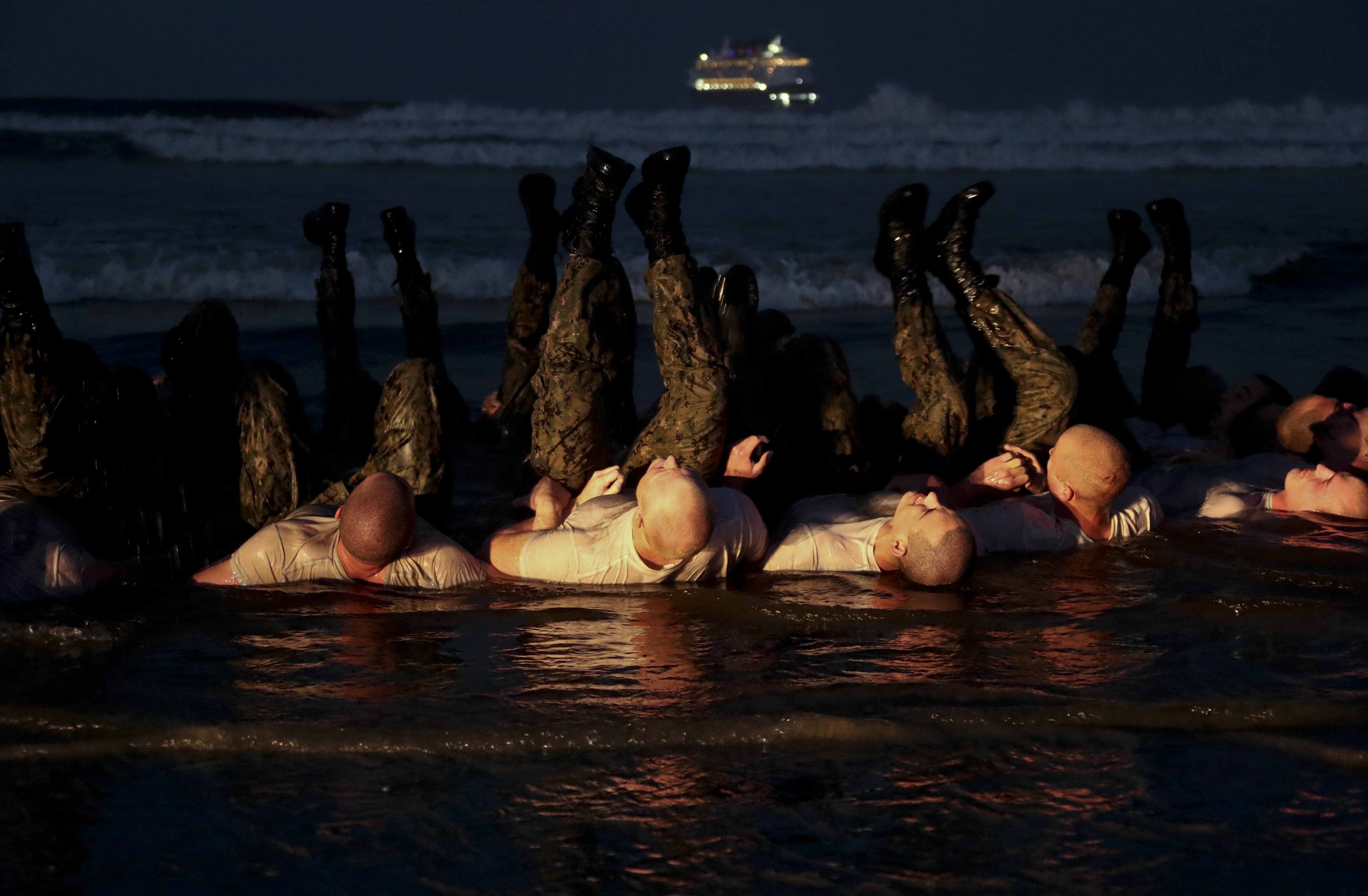
By the time emergency services reached Mullen, he was unresponsive. Watchstanders had not performed CPR because they were not trained, according to the May investigation.
The investigation also noted issues with Basic Training Command Medical leadership, with corpsmen in the BTC Medical Department raising concerns about lack of leadership, medical competency and poor temper for an unnamed leader.
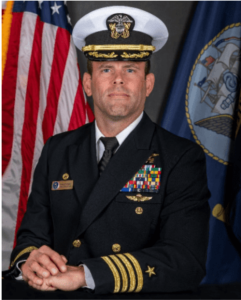
Capt. Bradley Geary, the commander of the Basic Training Command at the time of Mullen’s death, opted to mentor the leader instead of relieve him.
The investigation also highlighted concerns about the rate of attrition for Mullen’s class and the prior classes. Geary attributed the attrition rate to a lack of mental toughness by the current generation, according to the investigation.
Civilian employees had been hired as mentors to provide continuity, but tension arose between civilian employees and active-duty instructors. As a result, Geary told the civilians, who had raised concerns about the training’s increased risk, to allow the active-duty instructors to take on more of a leadership role.
Attrition rates during Geary’s tenure surpassed historical ones, raising red flags. In 2021 and 2022, attrition in the first three weeks of Phase 1, which comes before Hell Week, was 48 percent and 49 percent, respectively, compared to the historical average of 30 percent.
To adjust the attrition rates, Geary mandated that candidates must get six hours of sleep a night before Hell Week and ended additional training, which had been seen as extra work.
“Capt. Gear maintained a view that the high attrition was caused, among other reasons, by the current generation having less mental resilience, or being less ‘tough,’” according to the investigation. “As a result, while he removed ruck-runs and added mandatory sleep, he made the decision to take no additional action on the deficient controls on instructor cadre execution and heightened attrition continued through Class 353.”
Geary, along with Capt. Brian Drechsler, was responsible for overseeing the medical care of the candidates. Geary turned over the command to Capt. Timothy Sulick in June 2022.





